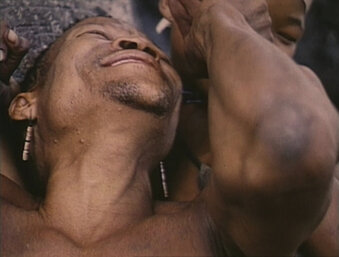This is a supplement to “The Ax Fight : A Critical Engagement with the Work of Tim Asch and John Marshall” by ANNA GRIMSHAW AND SYDNEY SILVERSTEIN . Read the article here.
Tim Asch & Napoleon Chagnon’s The Ax Fight is one of the most commonly available ethnographic films in university libraries or digital streaming sights. The short films by Asch and Marshall discussed in this essay may be less commonly available, although some are accessible through popular educational databases such as Kanopy and Alexander Street. The following exercises suggest some new ways in which these materials might be incorporated into anthropology classes.
The Ax Fight
Reflexivity
Ask students to think about the role of reflexivity in anthropology. What does reflexivity entail in terms of the bodily practice of fieldwork? How might it be incorporated into what anthropologists produce (texts, films, etc)? After discussing the concept of reflexivity, screen The Ax Fight. What forms of reflexivity is this film engaging with? What is it missing?
Problematic Ethnography
Even if we understand The Ax Fight to be a problematic film, why might it still be useful in anthropological training? What does this film show us about the anxieties that haunt anthropological knowledge production? And what possibilities does it suggest for more closely examining the processes of making and our notions of reflexivity?
Pairing Asch & Marshall
On Humor
Screen Asch’s A Man and his Wife Weave a Hammock and Marshall’s A Joking Relationship. Ask students to think about the role of humor. How is the filmmaker incorporated into the joking of the cinematic subjects? What are the different qualities of humor? Does the filmmaker respond to this humor? If so, how? What does this show us about the relationship among filmmaker and subjects?
On Technique and Corporeality
Consider the same pairing of films, this time focusing on the role of motion. How is the cameraman’s body a static or moving entity? How does this effect the framing of the shots, and the corporeal relationships with subjects? How might corporeal practice be considered as a technique of ethnographic filmmaking? How might we consider this in relation to the concept of reflexivity?
UPDATED JULY 5, 2020



